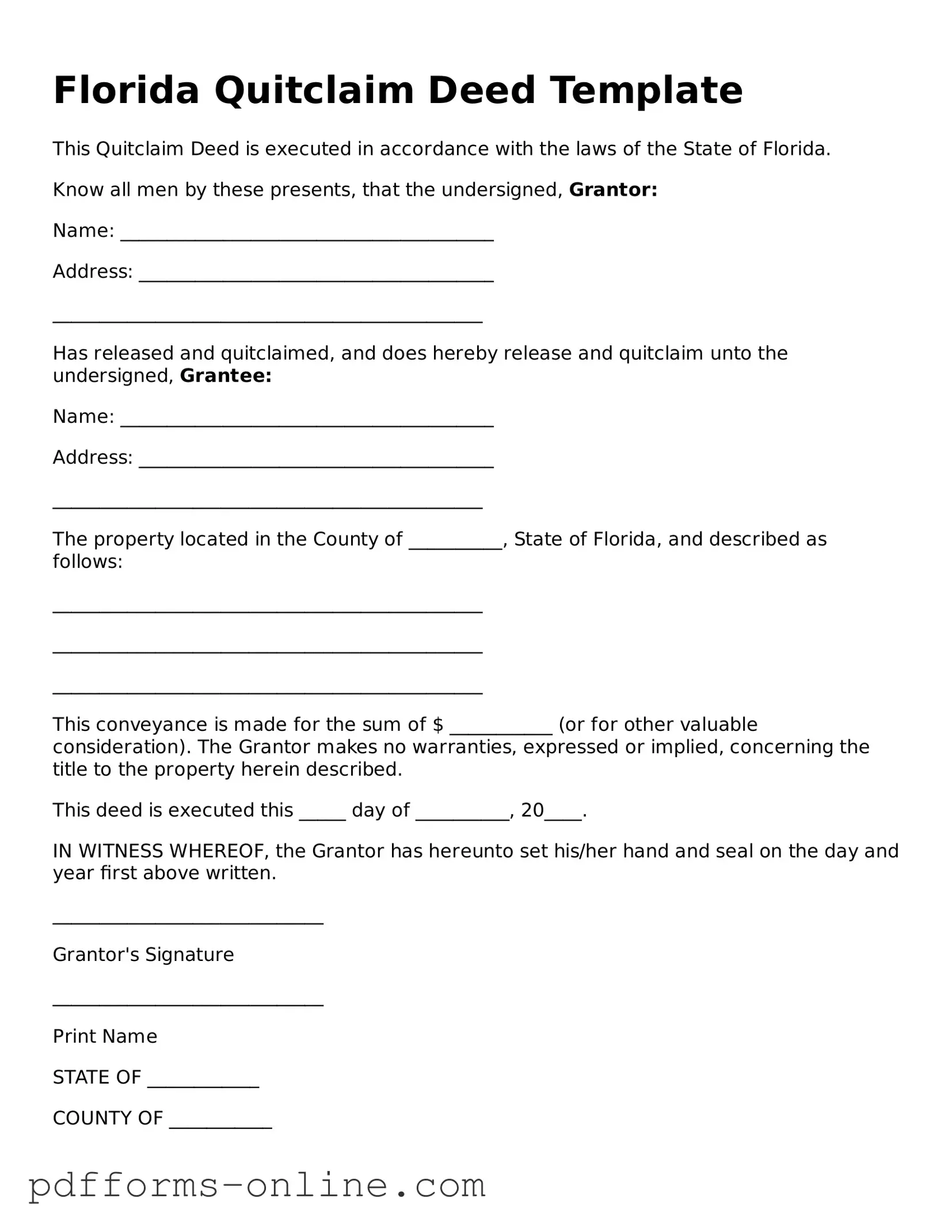Florida Quitclaim Deed Template
This Quitclaim Deed is executed in accordance with the laws of the State of Florida.
Know all men by these presents, that the undersigned, Grantor:
Name: ________________________________________
Address: ______________________________________
______________________________________________
Has released and quitclaimed, and does hereby release and quitclaim unto the undersigned, Grantee:
Name: ________________________________________
Address: ______________________________________
______________________________________________
The property located in the County of __________, State of Florida, and described as follows:
______________________________________________
______________________________________________
______________________________________________
This conveyance is made for the sum of $ ___________ (or for other valuable consideration). The Grantor makes no warranties, expressed or implied, concerning the title to the property herein described.
This deed is executed this _____ day of __________, 20____.
IN WITNESS WHEREOF, the Grantor has hereunto set his/her hand and seal on the day and year first above written.
_____________________________
Grantor's Signature
_____________________________
Print Name
STATE OF ____________
COUNTY OF ___________
Before me, a Notary Public in and for said State and County, personally appeared ________________ (Grantor's Name), who is known to me or who has produced ___________________ as identification, and who acknowledged that he/she executed the foregoing Quitclaim Deed for the purposes therein contained.
Given under my hand and official seal this _____ day of __________, 20____.
_____________________________
Notary Public
My Commission Expires: ________________
